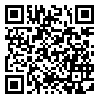Volume 15, Issue 1 (2015)
QJER 2015, 15(1): 209-228 |
Back to browse issues page
1- Professor of Agricultural Economics, Department of Agricultural Economics, Faculty of Agronomy Sciences, University of Tehran
2- Ph.D. Candidate in Agricultural Economics, Faculty of Agronomy Sciences, University of Tehran
2- Ph.D. Candidate in Agricultural Economics, Faculty of Agronomy Sciences, University of Tehran
Abstract: (15334 Views)
Inflation is the main problem which should be overcome both by the government and economic agents. The existence of inflation in an economy causes distortion and disequilibrium in the macroeconomic variables in the forms of decreasing growth rate, rising unemployment rate and uneven income distribution and so on. In addition, the uncertainties caused by the high inflation rates, raise the inflation expectations. This paper tries to found out which type of inflation expectations gives the better explanation of current inflation: backward-looking, forward-looking or some combination of the two? Using Generalized Method of Moments (GMM) and annual data over the period 1976-2008, the results of hybrid Philips model show that inflation in Iran is significantly determined by backward-looking inflation expectations, forward-looking inflation expectations, the output gap, exchange rate, and liquidity growth. However, backward-looking inflation expectations are more important than forward-looking expectations. The findings imply that managing inflation expectations, liquidity growth, and exchange rate can complement each other to achieve overall price stability.
Received: 2011/12/4 | Accepted: 2013/07/16 | Published: 2015/03/21
| Rights and permissions | |
 |
This work is licensed under a Creative Commons Attribution-NonCommercial 4.0 International License. |


